Punch-Out!! Series: A 25-Year Retrospective
In honor of the recent release of Punch-Out!! for the Nintendo Wii, the 25th anniversary of the series, and the June 2009 choice of Punch-Out!! for the Together Retro game club, Â here is a look back at the series through the years, how it changed, and why we root so hard for a little guy known as Little Mac.
(presented by Ack and racketboy)
What Made The Punch-Out!! Series Great
It isn’t surprising that the Punch-Out!! series holds a special place in the hearts of nostalgic gamers just like many of Nintendo’s other franchises. Some may love it for it’s colorful characters and humor, but Punch-Out’s appeal runs much deeper than that.
Rethinking the Genre & Gameplay
Punch-Out!! was one of the first in a long line of Nintendo franchises that took an existing genre and re-built it from the ground up so it could deliver a fresh gaming experience that could appeal to a wide array of ages and experience levels (think Pikmin and the Real-Time Strategy genre or Mario Kart and the racing genre).  While sports games had a decent audience even in the 80’s, Punch-Out brought a sports-themed game (a boxing game, even) to a more mainstream audience with its humorous presentation and fresh game mechanics.
The foundation of Punch-Out’s game mechanics actually bears more resemblance to a puzzle game than a sports title. As those that are familiar with the series know, the key to beating your opponent isn’t really in thinking like a real boxer. Instead, the player needs to pay attention to certain cues and patterns that opponent repeats throughout the match. Once the player picks up on these little elements, they are able to execute their attacks accordingly and exploit the “weaknesses” in their opponent.Â
Cracking the Code of Punch-Out!!
This gameplay approach is actually what made the series so viral in playground conversations for kids in the mid-1980’s. When you first played Punch-Out!!, it wasn’t necessarily apparent what the key to success in the game was. Back then (and usually still today), we had preconceived notions about what most video games were like. Most people figured it was all about skill, reaction time, and following some basic concepts from “real-life” (in this case, boxing). So young kids like me were quite excited when we actually defeated Glass Joe as our first opponent, but quite frustrated when we struggled to beat the next opponent.Â
Then, we go to school the next day and hear that one of our buddies got all the way to somebody like King Hippo or Mr. Sandman. Upon hearing that news, we just about fell over in disbelief. The key was that they had figured out the patterns, and in the process, turned themselves into little legends of the playground. And of course, there was always that one kid who always claimed to beat Mike Tyson on more than one occasion (which always went along with other equally unlikely stories)
The bottom line is that once you “cracked the code” on Punch-Out, you felt like you were a part of “the club” and one of gaming’s elite. And of course, making your way to the legendary Mr. Sandman or Mike Tyson (and maybe even beating that final boss) made you feel like you could accomplish anything in a video game and you had to brag to each and every one of your friends and enemies about it.
Sure, talking about each of the crazy characters was fun as well, but when you really think about it, that was really just icing on the cake for most of us. Like most games, it really comes down to the gameplay and how the experience made you feel.
Games in the Punch-Out!! Series
Punch-Out!! (1984, arcade)
 |
 |
This is the arcade game that started it all, and the first appearance of such memorable characters as Glass Joe, Bald Bull, and Mr. Sandman. Even in this first incarnation, the arcade game demonstrated some colorful cartoon-like graphics that more-than-impressed elementary school arcade afficianodos like myself.  Combine the impressive presentation with the puzzle-game-in-disquise gameplay and it was quite evident from the beginning that Nintendo had found a solid forumla for bringing a genre like boxing and make it fun for gamers of all ages and experience levels.
In Punch-Out!!, players took control of the nameless challenger with green hair who had to fight his way through the ranks to claim the championship belt, and then fight through harder versions of his opponents again and again to keep it, as there is no true ending to this title. Fights are viewed literally through the challenger, represented by a bright green wireframe through which the opponent could be viewed.
The game utilized a simple three-button design and a joystick for dodging and changing height, and the arcade cabinet was an upright with two arcade monitors stacked on top of each other, the bottom showing the actual fight with the top displaying relevant information. Fights had to be won by KO in one 3 minute round. To do this, opponents had to be whittled down by punching with the right or left attack buttons until the player’s KO meter was full enough they could be dropped by the KO Punch button. The game also featured digitized speech.
Watch Punch-Out!! Gameplay Video
Super Punch-Out!! (1984/1985, arcade)
 |
 |
This sequel didn’t do much beyond minor tweaks to the original formula and giving us a new roster of enemies to box against. The arcade cabinet was once again an upright with two monitors, and the controls were roughly the same, with one minor addition: the joystick could be yanked up to allow the player to duck. The appearance of the game was similar, with the only major changes being done to the information screen. Now the three minute timer told how long it took the player to defeat his opponent, and top times were listed at the top of the screen. The nameless challenger also sports a new haircut in this sequel.
While this game may not have grown much beyond its predecessor, it featured some new characters with new tricks. The game was also harder, with Bear Hugger replacing Glass Joe as the first opponent, and new characters like Dragon Chan and Great Tiger appearing. The game even adds some drinking humor with the character Vodka Drunkenski. Opponents will generally make it to the third knock out, but don’t get up after that.
Punch-Out!!/ Mike Tyson’s Punch-Out!!/ Punch-Out!! Featuring Mr. Dream (1987, NES)
 |
 |
Mike Tyson’s Punch-Out, originally released in 1987, brought the greatest jump in terms of gameplay and style. Instead of the nameless challenger, players now take control of Little Mac, a kid from the Bronx who wants to become the World Heavyweight Champion.  This installment in the series is also the most iconic and is the where the series really made a name for itself.  (The advertising campaign probably helped as well)  Bringing the arcade classic into the homes made it much easier for gamers to master the techniques needed to progress through the game, and as mentioned above, helped start many bragging contests during elementary school recess sessions.
Even though the NES version is an excellent installment that many of us hold dear, a number of things had to be changed when transitioning from the arcade counterpart.  Since the NES wasn’t up to par with the arcade hardware, instead of a wireframe to see through, Little Mac is extremely short. To punch an opponent in the face, he even has to leap. While the controls are similar, the start button is now used for the KO Punch, which can only be executed if the player earns a star, and opponents will only ever punch Little Mac in the face: no shots to the body to worry about here. A password system was implemented so players could continue their games.
A few other new features were added, such as the ability to recover from a KO by rapidly pressing buttons as well as a heart meter. The heart meter shows the amount of punches Little Mac can throw before becoming exhausted. Once he is, he can no longer throw punches, but can dodge enemy punches in an attempt to gain more hearts and get back in the fight. Each fight is broken into three rounds of three minutes, unless an opponent is dropped before that. Running out of time does not mean an instant loss, as it did in the arcade versions. Fights can be one by KO, by TKO, or by decision, a first for the series. Also a first for the series is the plot, with Little Mac being trained by Doc Louis, who offers advice or makes various statements between rounds.
There are three official versions of Punch-Out!! for the console, being the gold Punch-Out!!, Mike Tyson’s Punch-Out!!, and the re-release of Punch-Out!! after Tyson’s contract expired and the famous boxer had lost his title. The gold cartridge release was a special prize for the Golf U.S. Course Famicom Tournament. It’s the first Japanese Famicom release of the game, predating Mike Tyson’s game in the United States Its final boxer is Super Macho Man. Mike Tyson’s Punch-Out!! includes Mike Tyson, the only real-world boxer in any of the series. The 1990 re-release replaced Mike Tyson with a new character, Mr. Dream, and the re-release is sometimes known as Punch-Out!! featuring Mr. Dream. In all versions, Vodka Drunkenski’s name was changed to Soda Popinski.
Watch Punch-Out!! Gameplay Video
Shop for Punch-Out!! on Amazon.com
Shop for Punch-Out!! on eBay
Super Punch-Out!!(1994, SNES)
 |
 |
Nintendo hoped to translate this success to their 16-bit powerhouse and bring a style that was similar to their Punch-Out and Super Punch-Out arcade games. In addition to the bigger, more cartoon-like character sprites, the game brought in a number of fresh characters to add to a select few from previous console and arcade installments.
Much like the arcade versions, Super Punch-Out for the SNES had bright, cartoon-like graphics and more of a behind-the-back perspective (though this time with transparency instead of the wireframe).  The single 3 minute round system and system to build up to a KO Punch has also returned. The game actually received a great deal of criticism for being different from the NES versions, though it was much closer to the original arcade titles. There were some welcome additions, of course.
First, a new power up system was implemented. As players got stronger, the background color of their character portrait would change. Both the player and the opponent have stamina bars, though the player could gain stamina back by rapidly pressing buttons after knocking down their opponent. While the player can once again be hit with body blows, they can easily be blocked by not pressing anything. Punches also do different damage, depending on the side and type (Hint: the player tends to be weaker on the left side). The game featured a large cast, with both returning fighters and some new ones, as well as voice acting for fighters and the announcer.
While it was a fine game, Super Punch-Out didn’t have quite the cultural impact of the NES release. Â Maybe it was because it wasn’t as fresh or innovative, the opponents attack cues were a bit more obvious, or perhaps it just didn’t have quite as an interesting cast of characters (good ‘ol Doc, the trainer, is gone altogether). Â Whatever the case, its still a fine game and worth collecting for anyone that enjoyed the originals.
Watch Punch-Out!! Gameplay Video
Shop for Punch-Out!! on Amazon.com
Shop for Super Punch-Out!! on eBay
Punch-Out!!(2009, Wii)
 |
 |
After 15 years in retirement, Little Mac makes a much-anticipated return to the ring. Â With the Wii setting sales records, Nintendo thought it might be worth taking a risk on resurrecting an beloved, old-school franchise. Â While it may be a bit early to gauge the game’s financial success, Punch-Out!! for the Wii had tremendous buzz from the first day it was announced.
Much to the delight of fans, Nintendo stayed realtively true to the game’s roots. Â Many of most popular characters make a return, and while it might not be true two-dimensional graphics, the perspective stays the same and cel-shading is used to keep the cartooney look and feel. Â In addition to the nostolgic presentation, Nintendo also did their best to re-create the excitement of having Little Mac fight his way through the tournament that the NES game brought to many young gamers in the 80s. Â It feels a bit strange having some voice acting for the characters after being used to the older versions of the games, but overall, the final package is quite impressive.
In this modern release, there are also multiple game modes and multiplayer has been added.  For those fearing that the Wii version will be pure motion controls, Punch-Out!! has multiple control schemes can be used, including NES-style controls in addition to motion control (but different than Wii Boxing) and the Wii Balance Board (which can give you a bit of a workout). Once again players can win by KO, TKO, or decision, and fights consist of three rounds. The hearts for punching return, though stamina can again be obtained by KO-ing an opponent and rapidly pressing buttons.  There are still some secrets to be found in the game like some instant KOs and different ways to build up your star count.
The real challenge of the game is to unlock Champions Mode, in which any opponent will knock Little Mac to the floor in one hit. To unlock this, players must first beat Career Mode, then the harder Title Defense Mode. This unlocks Last Stand Mode. In Last Stand Mode, Little Mac must face randomly selected opponents and defeat ten of them to unlock Champions Mode. The Restart and Quit options are disabled, and if Little Mac loses, Career Mode is locked and players must create a new file to start over.
In the end, Nintendo and Next Level Games produced a follow-up to this classic series that serves as an excellent example of how to take a classic franchise and keep it relevant without losing it’s original appeal.  It also has enough features and replayablity to warrant  a higher price than an Xbox Live Arcade or Wii Ware game download.
Watch Punch-Out!! Trailer
Shop for Punch-Out!! on Amazon.com
Shop for Punch-Out!! on eBay
Nintendo’s Punch-Out!! Spin-Offs/Adaptations
 |
Arm Wrestling (1985, arcade)  Not actually a true part of the Punch-Out!! series, this game was created by the same team that designed Punch-Out!! and is considered a spin-off. The two monitor display is brought back a third time, as well as the Punch-Out!! engine. The camera gives an over-the-shoulder look at an arm wrestling match, with the player once again playing as the nameless challenger as he beats a colorful cast of characters, including Mask X, who is actually Bald Bull. Much of the music is brought over from Punch-Out!!. Unfortunately the game wasn’t as popular, partly because it just wasn’t as much fun.    In the game, the player has one minute to successfully pin their opponent. To do this, they must push their opponents wrist to the mat by using the joystick to the left, then to the right to counter-attack the computer’s push back. If the player fails, they must move the joystick back and forth quickly to shake off being pinned. Currently the world record in Arm Wrestling is held by Mark Haber, who in June 1986 earned 781,030 points. No one else has ever verified a score of even half that. |
 |
Punch-Out!!(1988, Game & Watch) Not originally a Punch-Out!! game, this handheld version was actually a renamed re-release of the Game & Watch title Boxing, originally released in North America in 1984. Beyond being about boxing, the game carries no official similarities to the series, and the game is presented from a side perspective as opposed to behind the player’s character. In all releases since, the game has been called by its original title, Boxing. |
 |
Teleroboxer (1995, Virtual Boy) This is the closest the Virtual Boy got to a Punch-Out!!, and the games are pretty similar for a reason: both were developed by Nintendo Integrated Research & Development. The plot is radically different, consisting of fights between robots, and the controls use the dual d-pads. The game also doesn’t have any kind of end: once the final fighter has been defeated, the player then has to face harder opponents at random over and over again until they finally lose. |
Other Punch Out!! Appearances & Cultural Impact
Punch-Out!! characters and system have appeared in other places. Here’s just a short rundown of what to look for.
- King Hippo teamed with Eggplant Wizard in the cartoon show Captain N. Both King Hippo and Little Mac appear in the Captain N comic book.
- Little Mac appearing as both a trophy and an assist trophy in Super Smash Bros. Brawl.
- In the Japan-only Wii game Captain Rainbow, Little Mac is a supporting character.
- Several of the Wario Ware games feature Punch-Out!! themed boss fights and level designs
- Punch-Out!! has been mentioned or parodied in such shows as The Simpsons and Family Guy, and either appears or is mentioned in such films as Over the Top and Harold and Kumar Escape From Guantanamo Bay.
- This fan-made movie trailer was an entry for Nintendo’s own Short Cuts Showcase Contest. Â
Â
Punch-Out!! Clones & Wannabees
There have been a ton of boxing games released since the days of the original Punch-Out!! games including some with a more humorous takes on the subject (like Ready to Rumble and FaceBreaker), but here are some of the games that felt like they had a close connection to the series or we simply trying to duplicate its success.
Affiliate programs and affiliations include, but are not limited to, the eBay Partner Network or Amazon Associates.
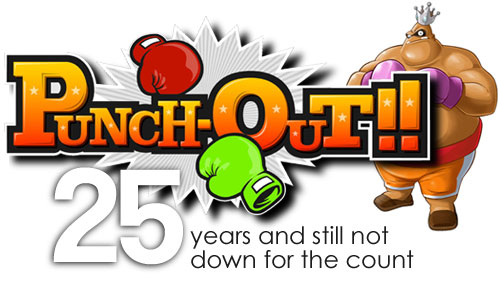
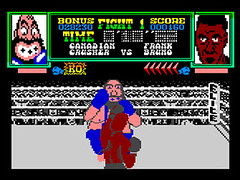
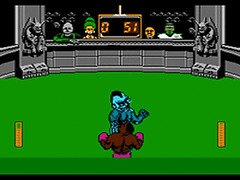

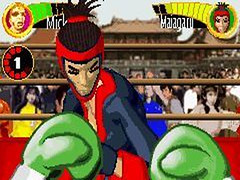
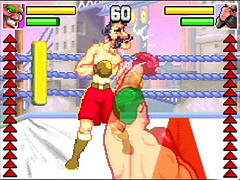
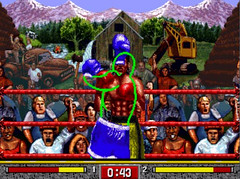
No mention of James ‘Buster’ Douglas Knockout Boxing? 🙂
“No mention of James ‘Buster’ Douglas Knockout Boxing? :)”
Different style….
Nice article, I need to try the SNES one…
What about Treasure’s Hajime No Ippo: The Fighting for GBA?
Hey low blow, thanks, I’d never heard of that(or the manga for that matter). It looks like the two handheld versions(GBA and DS) have appearances similar to Punch-Out!!, though the GBA version looks a lot closer since the DS requires a very different control scheme via the stylus. It’s similar to one of the Wii version’s control scheme, while the other two control schemes for the Wii look like they resemble Punch-Out!! or Wii Sports Boxing.
Great, great article. I knew about Power Punch II, which is hilarious. But the other clones are news to me. The GBA ones actually look worth tracking down!
When does the Together Retro article go up? I played Punch-Out!! for hours yesterday!
I bought George Foreman KO Boxing back in the day, to get my Punch-Out fix after I got tired of actual Punch-Out. Not bad, just took itself too serious.
I’m surprised the article doesn’t mention George Foreman’s KO Boxing. Especially since it was developed by Beam Software and bears some similarities to Power Punch II.
George Foreman’s KO Boxing for Genesis, NES and SNES.
This flash game is obviously based on Punch-Out!! t’s pretty fun actually.
http://www.gtds.net/Breakfast-Brawl/